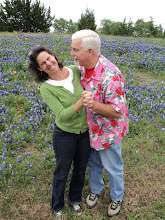Long before the first annual Kerrville Folk Festival in 1972, the city was for a short time the home of “the father of country music.” James Charles (Jimmie) Rodgers, nicknamed “the Singing Brakeman” for his background on the railroads, was the first person unanimously elected to the Country Music Hall of Fame in 1961, and his “blue yodel,” heard most famously on “Blue Yodel No. 1 (T for Texas),” was hugely influential.
Rodgers was born in 1897 in either Meridian, Mississippi, or Geiger, Alabama, depending on which source you believe, and died of a lung hemorrhage in 1933 in New York City, but many folks don’t know that he lived in Kerrville, about fifteen miles north of Madroño Ranch, from 1929 to 1932. Back then, the state of Texas, and particularly the Hill Country, enjoyed a reputation for clean and healthful air—Kerrville was the site of the Thompson Sanatorium and the State Sanatorium for Negroes—and Rodgers moved there in hopes of curing, or at least alleviating, the tuberculosis that eventually killed him.
His father Aaron was a foreman on the Mobile and Ohio Railroad, but Jimmie was a born entertainer. (His mother Eliza died when he was only four.) By the time he was thirteen, he had twice run away from home to join the tent-show circuit. The first time, he stole some sheets from his sister-in-law to make a crude tent, reimbursing her with the money he earned before he was recaptured. The second time, he charged an expensive tent to his father, without his father’s knowledge. After that, Aaron Rodgers decided to keep a closer eye on his wayward son and got him a job as a water boy on the Mobile and Ohio. A few years later, thanks to his older brother Walter, who was a conductor on the New Orleans and Northeastern, Jimmie got a job as a brakeman on the same line. As it turned out, working on the railroad was the best possible preparation for his future career, as he learned a number of songs, as well as how to play guitar and banjo, from African-American rail workers while traveling the South. (He later recorded with black artists Louis Armstrong and Clifford Gibson.)
Rodgers married Carrie Williamson in 1920 and had two daughters, one of whom died in infancy, but any chance that he would settle into a conventional career with the railroad ended in 1924, when he contracted TB. Forced to retire from the New Orleans and Northeastern, he once again turned to show business. He organized a traveling show that performed across the southeast until a cyclone destroyed his tent. By 1927 he had settled in Asheville, North Carolina, perhaps in the belief that the mountain air would help his lungs. In Asheville, he worked briefly as a city detective, but the show biz bug had infected him as deeply as the TB bacterium. He performed on local radio station WWNC; recruited a band called the Tenneva Ramblers, which he renamed the Jimmie Rodgers Entertainers; and signed a recording contract with the Victor Talking Machine Company. At this point, things began moving very fast for Rodgers.
In August 1927, he traveled to Bristol, Tennessee, for the legendary “Bristol Sessions,” at which the Carter Family also made their first recordings. His first recording, “Sleep Baby Sleep” backed with “The Soldier’s Sweetheart,” was released in October and was a moderate success. His next recording session, a month later in Camden, New Jersey, yielded “Away Out on the Mountain” and “T for Texas,” which sold half a million copies and made him a star. Jazz Age America, it seemed, couldn’t get enough of this skinny fellow with a plain-spoken vocal style so relaxed it makes Willie Nelson sound nervous by comparison. Between 1927 and 1933, Rodgers sold twenty million records and earned as much as $100,000 a year, but much of his income went to pay his medical bills, and he finally had to give up touring altogether.
Back in 1929, when Rodgers built a $50,000 mansion there, Kerrville was better known for mohair sheep than music; in fact, some called it the “Mohair Capital of the World.” A lot has changed since then—the number of sheep has dropped dramatically, while the human population has quadrupled, to more than 20,000—but “Blue Yodeler’s Paradise” still stands at 617 West Main Street. By 1932, however, Rodgers had moved to San Antonio, where he had a weekly radio show. He was dead within a year.
Kerrville should be proud that the Singing Brakeman once called the city home, albeit briefly. His music embodies the best aspects of our national life, bringing together many of the strands of American folk culture: black and white, southern and western, urban and rural. There aren’t many who have managed the same trick.
—Martin
What we’re reading
Heather: Lorrie Moore, A Gate at the Stairs
Martin: Timothy Egan, The Worst Hard Time: The Untold Story of Those Who Survived the Great American Dust Bowl

No comments:
Post a Comment